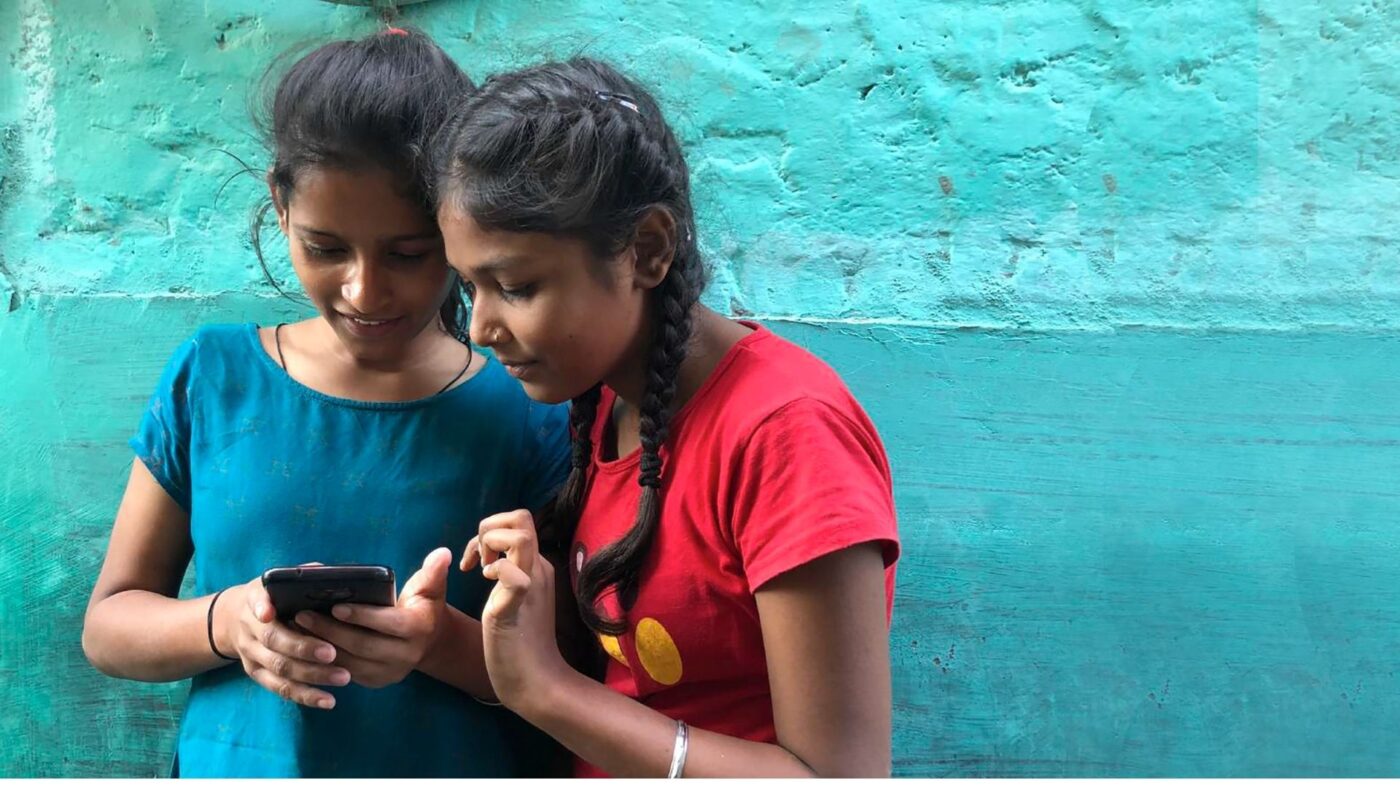Research shows that interactive games increase student motivation to pay attention and learn more effectively.
December 2021

Intensive research and dialogue with adolescent girls informed every aspect of the Game of Choice, Not Chance creation process. Photo courtesy Howard Delafield International
“For many adolescent girls around the world, dreams of education and a career are disrupted by early marriage and pregnancy”, explains Dr. Sharmila Neogi, an adolescent health advisor at the United States Agency for International Development (USAID). “Often, they are misinformed about safe practices, unaware of risks and unprepared for the consequences of their actions,” Dr. Neogi further explains.
To reduce the chances of an unwanted pregnancy and increase access to accurate information on sexual and reproductive health for adolescent girls, USAID is launching a new interactive digital initiative in the Spring of 2022. Game of Choice, Not Chance (GOC) is based on a direct-to-consumer model that empowers adolescents to become active decision-makers in their own lives through discovery and gaming.
The interactive game behind Game of Choice, Not Chance is story-rich and provides an immersive experience where players’ choices at key decision points direct the course of their journey. Players earn points as they progress through the game that increase or decrease health, relationship and confidence meters. Gamers also experience choice outcomes and have the chance to replay, creating learning loops designed to increase access to accurate information and real-world resources that can build decision-making agency.
The initiative was inspired by Susan Howard, the co-founder of Howard Delafield International (HDI). Game of Choice, Not Chance is based on three key elements: encouraging important conversations with adolescents, creating a platform based on human-centered design that is set to meet the needs of youth, and seeking input from target audiences to enhance iterations of the platform.
Encouraging important conversations
When developing the game behind Game of Choice, Not Chance, the creators worked to gain crucial insights and identify knowledge gaps through research and communication with adolescent girls. In their research, they realized that girls face a culture of silence and shame about the changes they experience during adolescence. Girls often experienced a conflict between their individual needs, wants, aspirations and sociocultural norms. Girls also indicated they wanted greater control over their lives and faced a push-pull dynamic which could undermine their sense of agency and ambition.
The creators used these insights from their dialogues and research to determine the key issues that GOC should address. They identified several key issues including girls’ identity, safety, mobility, lack of knowledge of menstrual hygiene and management, fertility cycle awareness, as well as consent as an important aspect of any intimate relationship.
Human-centered design
Intensive research and dialogue with adolescent girls informed every aspect of the Game of Choice, Not Chance creation process, including feedback from the game’s players. Initially, girls provided input on character development, dialogue, response and situations depicted in each episode of the game. For example, “One of the key suggestions that came from girls is introducing subjects like how to manage relationships, especially negotiating with parents on mobility or career paths and information on contraception that they cannot openly ask anyone,” says Dr. Neogi. Based on these elements, a role-play mobile game is being developed using game-based learning principles and human-centered design.
Seeking crucial inputs
Game of Choice, Not Chance ensured the development of its game incorporated elements of co-design throughout the process. Girls were frequently involved through design workshops which included group discussions, activities and game-play sessions to curate insights and narratives for the game design and understand the nature of conversation, language and pop-cultural references amongst the participants.
The co-design phase was followed by prototyping partially developed solutions and testing and feedback sessions in an iterative process. With the game now close to completion, the creators will depend on the girls to ensure the game effectively addresses their needs and aspirations.
The big launch
“The game will be a free download from the Google Play Store,” says Dr. Neogi. “Our initial launch will focus on engaging Hindi-speaking girls living in urban and peri-urban communities in Delhi, Rajasthan and Bihar.” The team has already conducted outreach to various private sector businesses and NGOs who work in the adolescent sexual reproductive health space for providing in-game links to their products, information, and services.
Future plans for GOC include designing and developing a game for boys to address sexual reproductive health challenges for young boys in the age group 15-19. As Dr. Neogi says, “This will also serve to build their support for girls’ agency and choice.” The team is also exploring how the game can be monetized by offering benefits to players by way of rewards, discounts and vouchers, and offering benefits to brands through in-game partnerships and linkages.
The project is in its third year of a five-year development process and is led by HDI through a consortium that includes India-based partners, Indusgeeks, Vihara Innovation Network and Girl Effect, and U.S.-based Cycle Technologies and NAM ER Technology. The game is informed by extensive research conducted with girls between the ages of 15-19 across Delhi, Rajasthan and Bihar. Key personnel include Susan Howard, the co-founder and project director of HDI, and Kavita Ayyagari, the India team lead for GOC and the country director for HDI in Mumbai.
Paromita Pain is an assistant professor of Global Media Studies at the University of Nevada, Reno.
COMMENTS